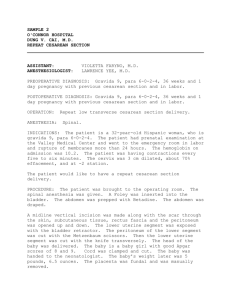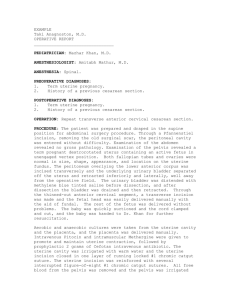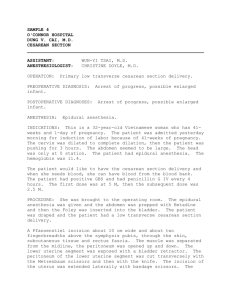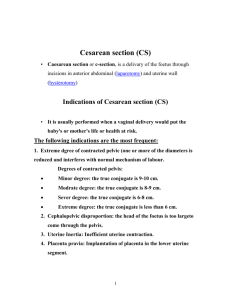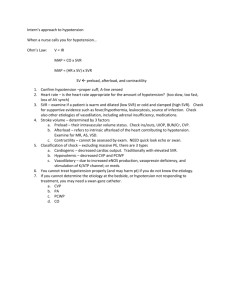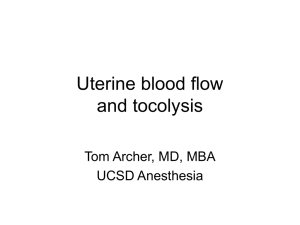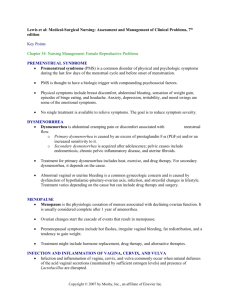EFFECT OF MATERNAL HYPERURICEMIA ON POST
advertisement
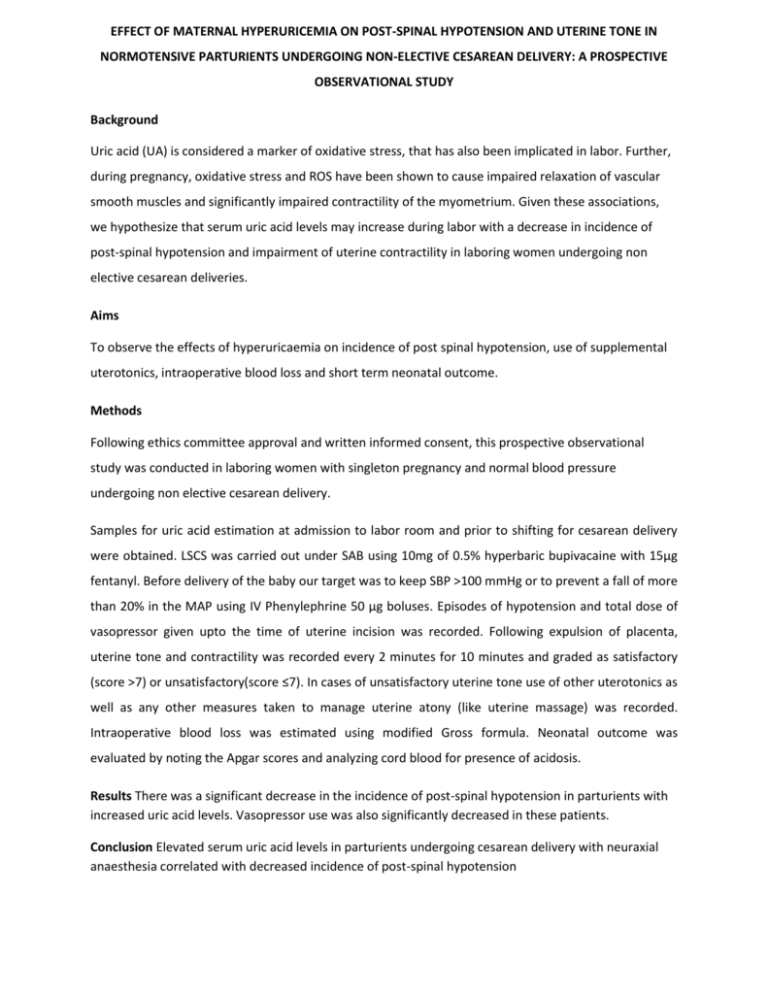
EFFECT OF MATERNAL HYPERURICEMIA ON POST-SPINAL HYPOTENSION AND UTERINE TONE IN NORMOTENSIVE PARTURIENTS UNDERGOING NON-ELECTIVE CESAREAN DELIVERY: A PROSPECTIVE OBSERVATIONAL STUDY Background Uric acid (UA) is considered a marker of oxidative stress, that has also been implicated in labor. Further, during pregnancy, oxidative stress and ROS have been shown to cause impaired relaxation of vascular smooth muscles and significantly impaired contractility of the myometrium. Given these associations, we hypothesize that serum uric acid levels may increase during labor with a decrease in incidence of post-spinal hypotension and impairment of uterine contractility in laboring women undergoing non elective cesarean deliveries. Aims To observe the effects of hyperuricaemia on incidence of post spinal hypotension, use of supplemental uterotonics, intraoperative blood loss and short term neonatal outcome. Methods Following ethics committee approval and written informed consent, this prospective observational study was conducted in laboring women with singleton pregnancy and normal blood pressure undergoing non elective cesarean delivery. Samples for uric acid estimation at admission to labor room and prior to shifting for cesarean delivery were obtained. LSCS was carried out under SAB using 10mg of 0.5% hyperbaric bupivacaine with 15µg fentanyl. Before delivery of the baby our target was to keep SBP >100 mmHg or to prevent a fall of more than 20% in the MAP using IV Phenylephrine 50 µg boluses. Episodes of hypotension and total dose of vasopressor given upto the time of uterine incision was recorded. Following expulsion of placenta, uterine tone and contractility was recorded every 2 minutes for 10 minutes and graded as satisfactory (score >7) or unsatisfactory(score ≤7). In cases of unsatisfactory uterine tone use of other uterotonics as well as any other measures taken to manage uterine atony (like uterine massage) was recorded. Intraoperative blood loss was estimated using modified Gross formula. Neonatal outcome was evaluated by noting the Apgar scores and analyzing cord blood for presence of acidosis. Results There was a significant decrease in the incidence of post-spinal hypotension in parturients with increased uric acid levels. Vasopressor use was also significantly decreased in these patients. Conclusion Elevated serum uric acid levels in parturients undergoing cesarean delivery with neuraxial anaesthesia correlated with decreased incidence of post-spinal hypotension
